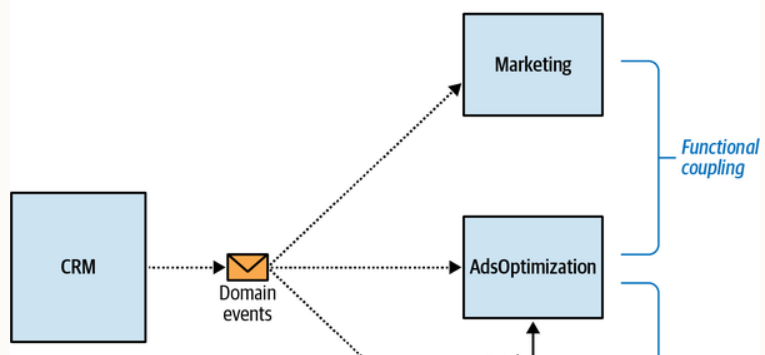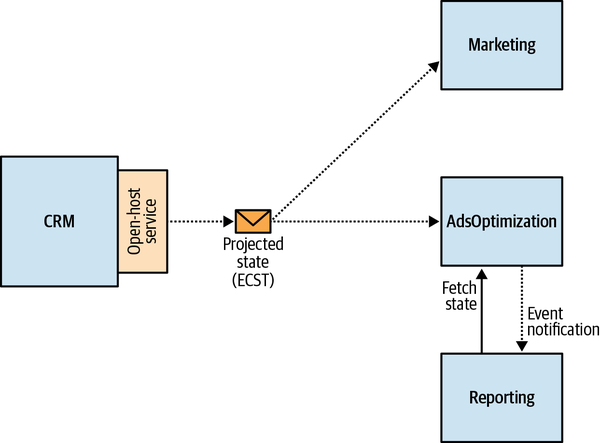Multiple components implementing the same business functionality, and if it changes, both components have to change simultaneously.
Examples
CRM

The CRM bounded context is implemented as an event-sourced domain model. When the CRM system had to be integrated with the Marketing bounded context, the teams decided to leverage the event-sourced data model’s flexibility and let the consumer—in this case, Marketing—subscribe to the CRM’s domain events and use them to project the model that fits their needs.
When the AdsOptimization bounded context was introduced, it also had to process the information produced by the CRM bounded context. Again, the teams decided to let AdsOptimization subscribe to all domain events produced in the CRM and project the model that fits AdsOptimization’s needs.
Interestingly, both the Marketing and AdsOptimization bounded contexts had to present the customers’ information in the same format, and hence ended up projecting the same model out of the CRM’s domain events: a flattened snapshot of each customer’s state.
The Marketing and AdsOptimization bounded contexts both subscribed to the CRM’s domain events and ended up implementing the same projection of the customers’ data. In other words, the business logic that transforms incoming domain events into a state-based representation was duplicated in both bounded contexts, and it had the same reasons for change: they had to present the customers’ data in the same format. Therefore, if the projection was changed in one of the components, the change had to be replicated in the second bounded context.
Learning Domain-Driven Design, Vlad Khononov
To resolve it, CRM component can project the model itself and publish an ECST message with the projected state.
